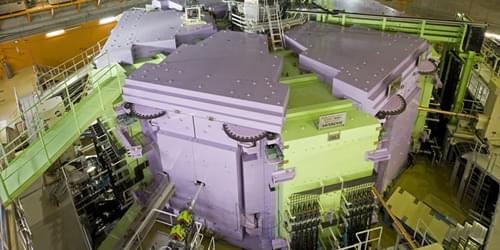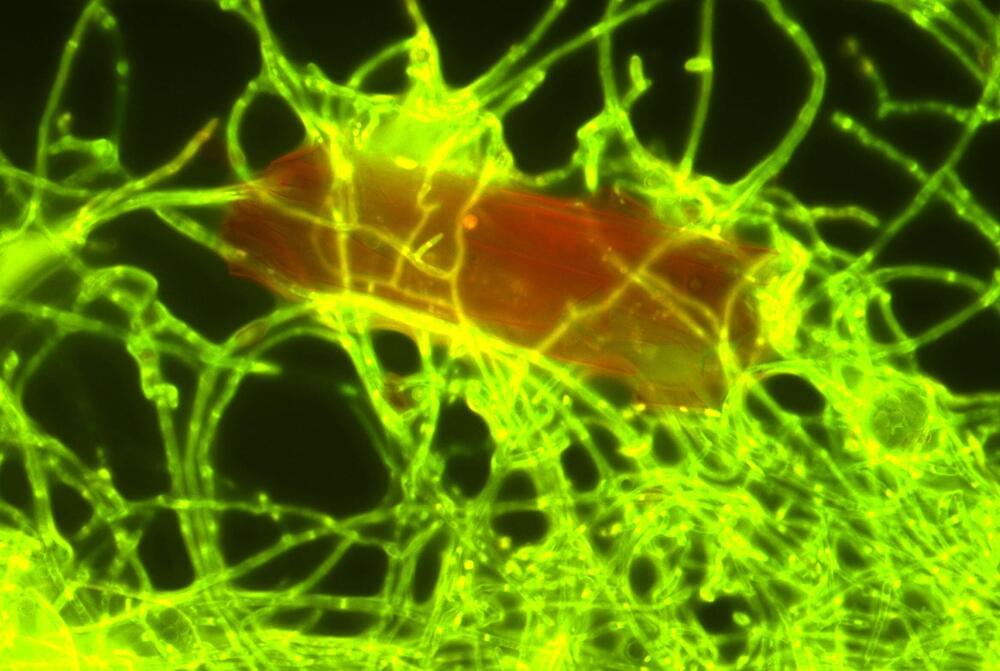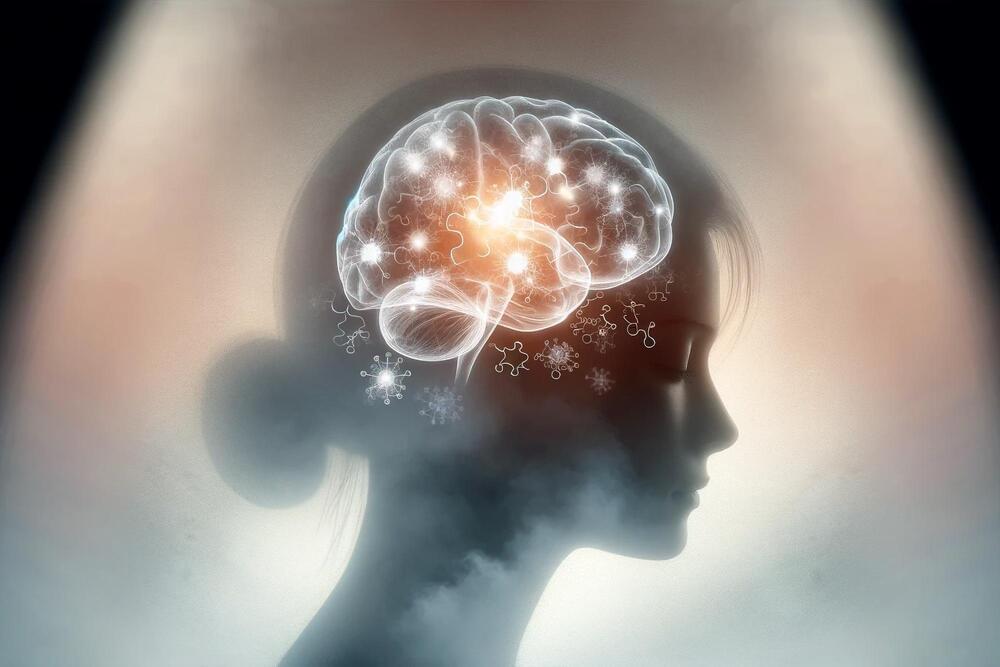Experiments comparing neutron-rich cadmium with previous data on a neutron-poor version prove that a key parameter in nuclear calculations depends on the neutron-to-proton ratio.



A fungus living in the sea can break down the plastic polyethylene, provided it has first been exposed to UV radiation from sunlight. Researchers from, among others, NIOZ published their results in the journal Science of the Total Environment. They expect that many more plastic degrading fungi are living in deeper parts of the ocean.
@NVIDIAOmniverse is a development platform for virtual world simulation, combining real-time physically based rendering, physics simulation, and generative AI technologies.
In Omniverse, robots can learn to be robots – minimizing the sim-to-real gap, and maximizing the transfer of learned behavior.
Building robots with generative physical AI requires three computers:
- NVIDIA AI supercomputers to train the models.
- NVIDIA Jetson Orin, and next generation Jetson Thor robotics supercomputer, to run the models.
- And NVIDIA Omniverse, where robots can learn and refine their skills in simulated worlds.
Read the press release.
#OpenUSD #Robotics #COMPUTEX2024 #IsaacSim
The Transforming AI panel from GTC 2024 features the authors of “Attention Is All You Need,” the groundbreaking paper that introduced the transformer neural network architecture. Transformers have since dominated all areas of AI, revolutionizing the industry. The discussion covers the following topics: ▫️ The development and impact of the Transformer model. ▫️ The evolution of computing and its democratization. ▫️ The future of AI technology and its potential applications. ▫️ The role of accelerated computing. ▫️ The potential for AI to revolutionize various industries. ▫️ The need for new data and learning techniques in AI development. Feature panel host: ▫️ Jensen Huang, Founder and Chief Executive Officer, NVIDIA Panelists: ▫️ Ashish Vaswani, Co-Founder and CEO, Essential AI ▫️ Noam Shazeer, Chief Executive Officer and Co-Founder, Character. AI ▫️ Jakob Uszkoreit, Co-Founder and Chief Executive Officer, Inceptive ▫️ Llion Jones, Co-Founder and Chief Technology Officer, Sakana AI ▫️ Aidan Gomez, Co-Founder and Chief Executive Officer, Cohere ▫️ Lukasz Kaiser, Member of Technical Staff, OpenAI ▫️ Illia Polosukhin, Co-Founder, NEAR Protocol Explore more GTC 2024 sessions like this on NVIDIA On-Demand: https://nvda.ws/3U33qo Read and subscribe to the NVIDIA Technical Blog: https://nvda.ws/3XHae9F 00:00 Introduction 11:00 Panelist Discussion #GTC24 #NVIDIA #GTC #AI #GenAI #Generative AI #Transformers #FutureOfAI

Lockheed Martin has opened a new engineering facility, laboratory, and demonstration center in Huntsville, Alabama, to advance US security capabilities.
The $18-million, 122,000-square-foot (11,334 square meters) site will house 500 employees who will take on upgrade, readiness, and sustainment works for the US Army’s Black Hawk helicopters, as well as the Missile Defense Agency’s Command and Control, Battle Management and Communications (C2BMC) system.
It will also be responsible for the modeling and simulation framework for the Ballistic Missile Defense System.


The mercurial billionaire said in a subsequent X post that xAI’s pre-money valuation was $18 billion. The financial term refers to the value of a company before any equity investment is made.
Pre-money valuation was $18B— Elon Musk (@elonmusk) May 27, 2024
Sunday’s announcement marks the first time xAI has talked about its fundraising efforts. Musk had repeatedly denied earlier reports from Bloomberg and the Financial Times about xAI’s outreach to investors.

Swiss researchers have developed a solar energy method using synthetic quartz to achieve temperatures above 1,000°C for industrial processes, potentially replacing fossil fuels in the production of materials like steel and cement.
Instead of burning fossil fuels to reach the temperatures needed to smelt steel and cook cement, scientists in Switzerland want to use heat from the sun. The proof-of-concept study uses synthetic quartz to trap solar energy at temperatures over 1,000°C (1,832°F), demonstrating the method’s potential role in providing clean energy for carbon-intensive industries. A paper on the research was published on May 15 in the journal Device.
The Need for Decarbonization.

I don’t know if this true but it definitely could be as most civilizations are probably more advanced than the earth.
A survey of five million distant solar systems, aided by ‘neural network’ algorithms, has discovered 60 stars that appear to be surrounded by giant alien power plants.
Seven of the stars — so-called M-dwarf stars that range between 60 percent and 8 percent the size of our sun — were recorded giving off unexpectedly high infrared ‘heat signatures,’ according to the astronomers.
Natural, and better understood, outer space ‘phenomena,’ as they report in their new study, ‘cannot easily account for the observed infrared excess emission.’

Scientists from Nagoya University in Japan have identified the role of serotonin neurons in linking glucose availability to reproductive health. Their research demonstrates how elevated glucose levels stimulate serotonergic neurons, leading to the release of serotonin, which in turn activates kisspeptin neurons responsible for reproductive hormone release. These findings explain why poor nutrition affects fertility and suggest potential treatments for depression-induced infertility through the use of selective serotonin reuptake inhibitors (SSRIs). Credit: SciTechDaily.com.
Scientists from Nagoya University in Japan have clarified the connection between energy levels and fertility in both animals and humans. They discovered that signaling from serotonin neurons plays a crucial role in maintaining reproductive function by detecting glucose availability, which in turn enhances the release of the reproductive hormone gonadotropin. These findings also offer an explanation for the reduced fertility seen in individuals with depression and suggest potential treatments. The study was published in Scientific Reports.
People who lack sufficient nutrition encounter problems with their reproductive health. For example, ballet dancers can experience menstrual disruptions, and women who fast can struggle to conceive. According to a new study led by Designated Associate Professor Sho Nakamura and Professors Hiroko Tsukamura and Satoshi Ohkura, one of the main factors that affect a person’s reproductive health is glucose availability.